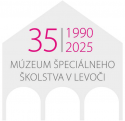Royal Institute for the Young Blind in Paris, 1784
Its founder is Valentin Haüy, French enlightener, teacher, minister officer and especially philanthropist of the blind.
Valentin Haüy was as a minister officer boggled by the café scenes hosted for the entertainment of the guests where the owner used the blind people as puppets. Haüy could not accept this situation and he was also troubled by the fact that most of the blind were dependent on begging. In particular he was interested by the case of beggar named F. Leseur. He was able to recognize any money he had received and thanked the giving people. Leseur became the first object of „blind“ education. Haüy cleaned him, gave him some clothes and started to educate him using his tactile skills. He created for him an embossed font and maps and he achieved great success with his „patient“. Based on these results, Haüy managed to raise funds for teaching another 12 and later 24 blind people. Haüy was convinced that the blind need a continuing education with the purpose-defining objectives and content of education. Immediately after the establishment of the institute he has introduced three major education parts: literature teaching, music education and vocational education. The institute serves its purpose even today and it’s the best-organized French school for the blind. In the Haüy’s times it was a royal institute and later, since 1791, it has become a national institute. There is maintained classroom where Louis Braille used to teach. Braille was a former student and later a teacher and in particular a creator of a unique 6-point embossed lettering.
.


